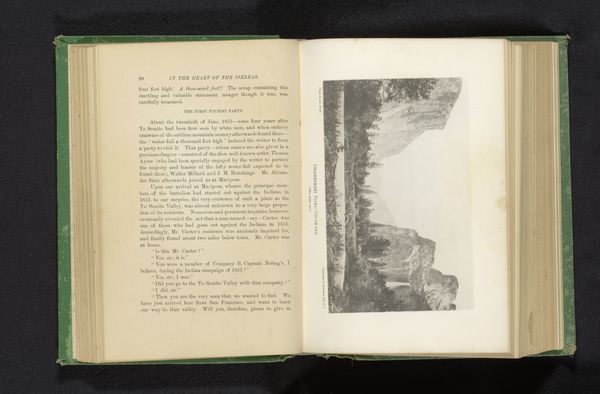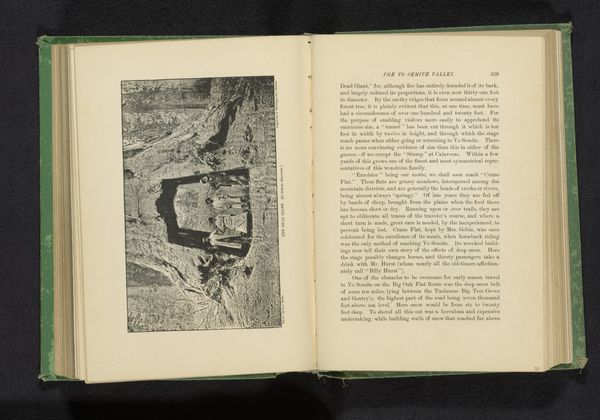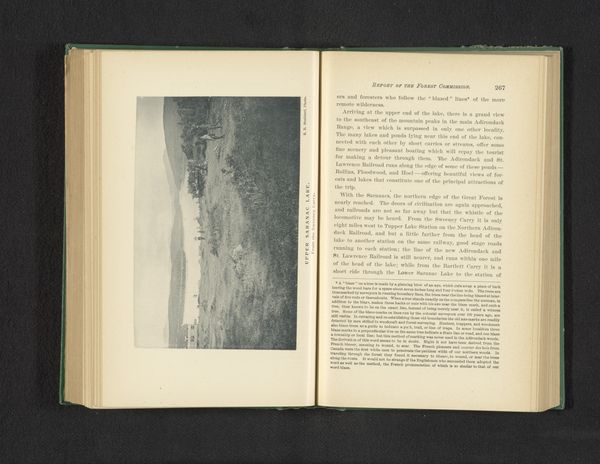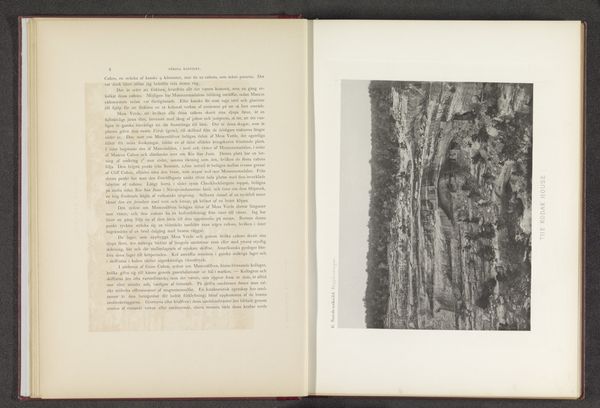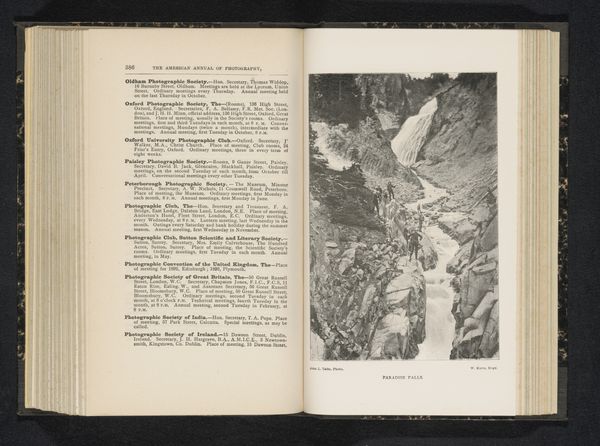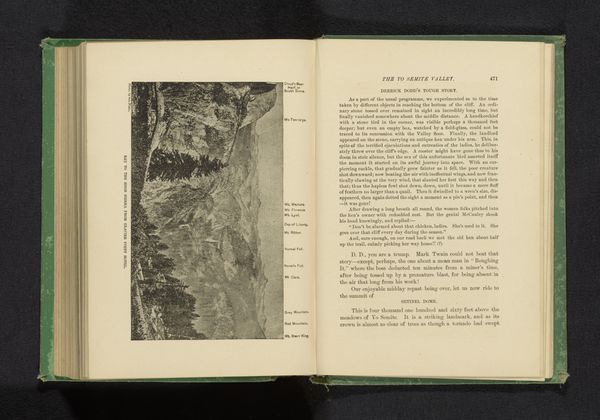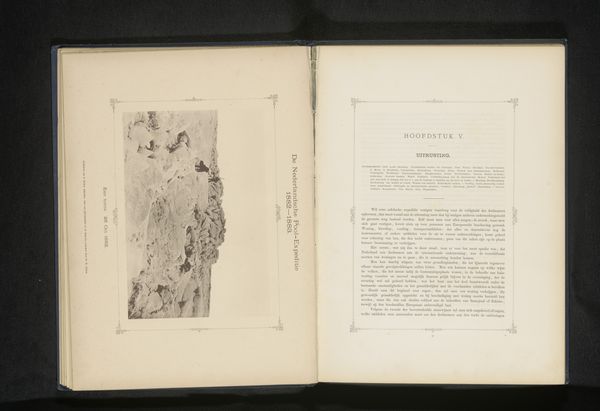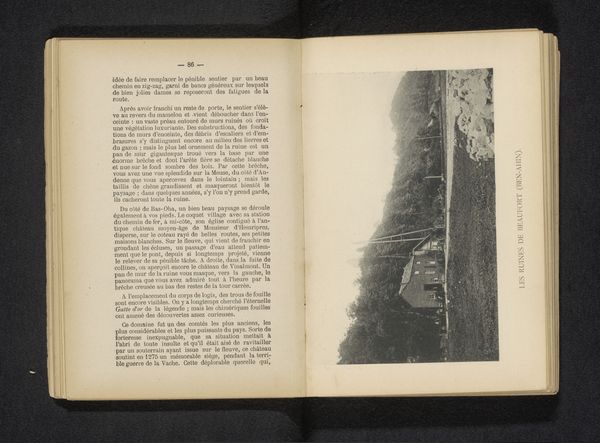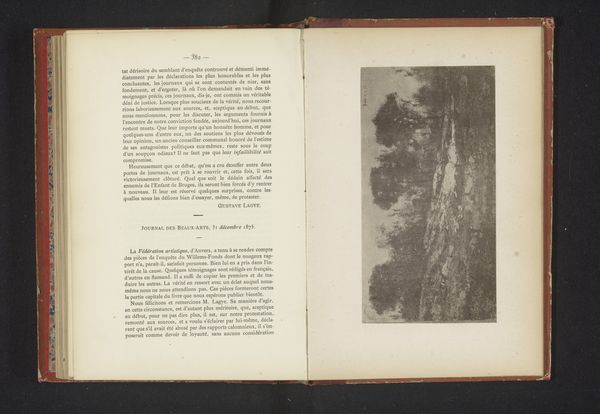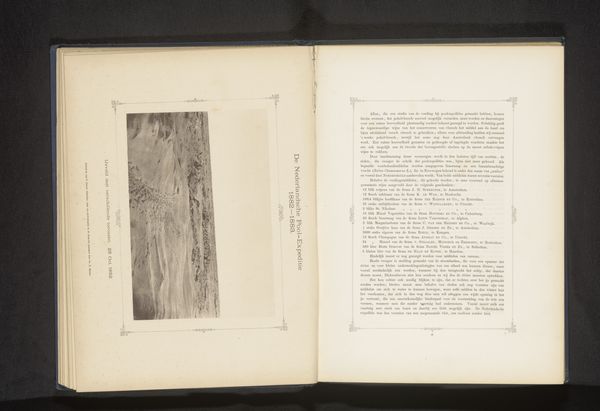
Reproductie van een ontwerp van een gezicht op het eiland Handa door G.C. Green before 1886
0:00
0:00
Dimensions: height 95 mm, width 149 mm
Copyright: Rijks Museum: Open Domain
Curator: Here we see a page from what appears to be a book, and on the right is an engraving attributed to G.C. Green, titled “Reproductie van een ontwerp van een gezicht op het eiland Handa," which translates roughly to "Reproduction of a design of a view of the island of Handa." The print likely dates before 1886. Editor: It strikes me immediately – the scene feels so incredibly busy, even chaotic. The jagged cliffs dominate the composition, and there are birds—so many birds. A flurry of them, rising seemingly out of the rock face itself. What is happening on this island? Curator: Well, Handa Island, off the coast of Scotland, is actually known as a vital bird sanctuary. So, what we're seeing is, in fact, a detailed, albeit somewhat romanticized, depiction of a real place. It speaks to the growing interest in naturalism during that period. Think about how Victorian society was starting to engage with environmentalism. The print functions as both art and visual document. Editor: That interplay is fascinating, but look closer: this wasn't just a disinterested objective rendering, I can immediately appreciate its place in travel and exploration narratives. We are not passive observers here. We participate in this experience somehow – note how birds circle around cliffs which suddenly open a gate into understanding ideas of preservation, a concern not often applied when we understand British empire as having exploited the environments it encountered, here this place matters. What is it saying about Britishness and ownership of place? Curator: Absolutely. Prints like these circulated widely, influencing public perceptions of landscapes. In a way, these reproductions aided in constructing an image of British geography and, perhaps, national identity itself, beyond the physical presence on site, there is active making of landscape from material form Editor: But even more than making. Beyond document, this is about power, about controlling what this "nation" is; who its nature is for. From aesthetic consumption to shaping colonial-era policies, it can reveal many stories from then until now. Curator: This exploration shows how historical prints can unlock complicated conversations on identity and representation. Editor: It has given me a deeper perspective on how visual documentation itself helped form views during this time period.
Comments
No comments
Be the first to comment and join the conversation on the ultimate creative platform.
